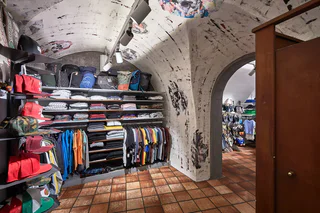
1/2
Sport Trocker
Lazfons/Latzfons, Klausen/Chiusa, Brixen/Bressanone and environs
| Poznaj urokliwe regiony Klausen, Barbian, Feldthurns i Villanders. Te miejsca oferują wspaniałe widoki, ciekawe atrakcje oraz bogatą historię i kulturę. |

1/2
Lazfons/Latzfons, Klausen/Chiusa, Brixen/Bressanone and environs

Verdignes/Verdings, Klausen/Chiusa, Brixen/Bressanone and environs

Verdignes/Verdings, Klausen/Chiusa, Brixen/Bressanone and environs

1/5
Colma/Kollmann, Barbian/Barbiano, Brixen/Bressanone and environs

1/8
Villandro/Villanders, Villanders/Villandro, Brixen/Bressanone and environs

Villandro/Villanders, Villanders/Villandro, Brixen/Bressanone and environs

Chiusa/Klausen, Klausen/Chiusa, Brixen/Bressanone and environs

Snodres/Schnauders, Feldthurns/Velturno, Brixen/Bressanone and environs

Barbiano/Barbian, Barbian/Barbiano, Brixen/Bressanone and environs

1/20
Villandro/Villanders, Villanders/Villandro, Brixen/Bressanone and environs

Colma/Kollmann, Barbian/Barbiano, Brixen/Bressanone and environs

1/3
Lazfons/Latzfons, Klausen/Chiusa, Brixen/Bressanone and environs

Alpe di Villandro/Villanderer Alm, Villanders/Villandro, Brixen/Bressanone and environs

1/3
Lazfons/Latzfons, Klausen/Chiusa, Brixen/Bressanone and environs

Untrum/Untrum, Klausen/Chiusa, Brixen/Bressanone and environs

1/4
Chiusa/Klausen, Klausen/Chiusa, Brixen/Bressanone and environs

1/6
Giovignano/Tschiffnon, Feldthurns/Velturno, Brixen/Bressanone and environs

Chiusa/Klausen, Klausen/Chiusa, Brixen/Bressanone and environs

Alpe di Villandro/Villanderer Alm, Villanders/Villandro, Brixen/Bressanone and environs

1/4
Tre Chiese/Dreikirchen, Barbian/Barbiano, Brixen/Bressanone and environs

1/2
Brixen/Bressanone and environs

Chiusa/Klausen, Klausen/Chiusa, Brixen/Bressanone and environs

1/9
Villandro/Villanders, Villanders/Villandro, Brixen/Bressanone and environs

Chiusa/Klausen, Klausen/Chiusa, Brixen/Bressanone and environs

1/4
Alpe di Villandro/Villanderer Alm, Villanders/Villandro, Brixen/Bressanone and environs

1/2
Barbiano/Barbian, Barbian/Barbiano, Brixen/Bressanone and environs

Gufidaun/Gudon, Klausen/Chiusa, Brixen/Bressanone and environs

1/2
Verdignes/Verdings, Klausen/Chiusa, Brixen/Bressanone and environs

Chiusa/Klausen, Klausen/Chiusa, Brixen/Bressanone and environs

Gufidaun/Gudon, Klausen/Chiusa, Brixen/Bressanone and environs